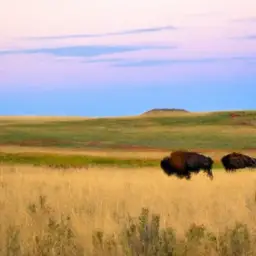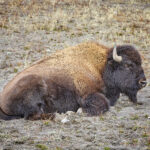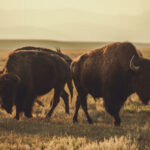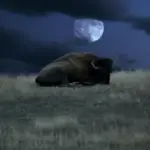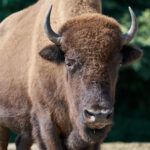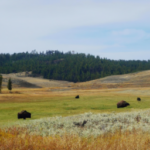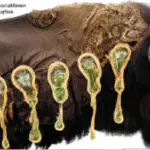Imagine walking through vast grasslands, the sun casting a warm glow on the horizon. As you take each step, you can hear the gentle rustling of tall prairie grasses and the distant call of birds.
Suddenly, you come across a magnificent sight – herds of bison and antelope peacefully grazing in harmony. The Grasslands are the habitat known for its abundance of these majestic creatures.
If you’ve ever wondered which habitat is renowned for such an incredible spectacle, look no further. It’s time to uncover the mystery and delve into the wonders of nature.
Understanding Grazing Animals
Grazing animals like bison and antelope play a significant role in ecosystems around the world. These herbivorous creatures have adapted to survive on a diet consisting mainly of grasses, shrubs, and leaves. By constantly moving and consuming vegetation, they help shape the landscape in profound and intricate ways.
Significance of Grazing Animals like Bison and Antelope
Grazing animals, such as bison and antelope, have a crucial ecological role in maintaining the balance of ecosystems. They help control vegetation growth, prevent the dominance of certain plant species, and facilitate the growth of diverse plant communities. Grazing also stimulates plant growth by stimulating regeneration and nutrient cycling, which enhances overall ecosystem productivity.
Ecological Impact of Grazing Bison and Antelope
The ecological impact of grazing bison and antelope is far-reaching. Their constant movement across the landscape provides opportunities for seed dispersal, promoting plant diversity and genetic variability. Their grazing behavior also creates open spaces and reduces competition for resources, allowing for the establishment of various plant species. Additionally, bison and antelope play a significant role in predator-prey dynamics, influencing the abundance and distribution of carnivores in their habitats.
Behavioral Traits of Bison and Antelope in Grazing Environments
Bison and antelope have developed unique behavioral traits to thrive in grazing environments. Bison tend to gather and move in large herds, which offers them protection against predators and allows for efficient resource utilization. These herds also exhibit migratory behavior, which helps them access fresh grazing areas and prevent overgrazing. Antelope, on the other hand, are known for their agility and speed, enabling them to escape predators and cover large distances in search of food and water.
The Great Plains: A Habitat for Grazing Bison
The Great Plains is a vast grassland region extending from Canada to Mexico, known for being a habitat ideal for grazing bison. It is characterized by its flat topography, fertile soil, and a semi-arid climate. The region experiences distinct seasons, with hot summers and cold winters. The abundant grasses and water sources in the Great Plains provide the necessary conditions for bison to thrive.
Geographical Description of the Great Plains
The Great Plains encompass a massive area, stretching over 1.3 million square miles. It extends from the eastern slope of the Rocky Mountains to the Mississippi River and from the southern edge of the boreal forests to the Gulf of Mexico. The region is mainly flat, with occasional low hills and valleys, creating a perfect landscape for the movement and grazing behavior of bison.
Ecological Characteristics Favoring Grazing Bison in the Great Plains
The Great Plains climate and vegetation composition makes it ideal for bison grazing. The region receives modest rainfall, which supports the growth of various grass species, including buffalo grass, switchgrass, and bluestem. These grasses provide nutritious forage for bison to sustain their massive size and energy requirements.
Challenges and Threats to Bison in the Great Plains
Despite the favorable conditions for bison in the Great Plains, various challenges and threats pose risks to their population.
Historically, the expansion of agriculture and settlements reduced the bison’s habitat, fragmenting their once-vast range. Additionally, uncontrolled hunting in the past led to a significant decline in bison populations.
Today, habitat loss, competition with livestock, and limited genetic diversity remain ongoing challenges for bison conservation in the Great Plains.
The Role of the Prairie Ecosystem
The prairie ecosystem is a unique and diverse habitat characterized by extensive grasslands, wildflowers, and scattered trees. Prairies are found in both the Great Plains and other regions worldwide.
These ecosystems have developed in response to specific climate conditions and exhibit intricate ecological interactions.
Characteristics and Ecology of the Prairie Ecosystem
Prairie ecosystems are highly dependent on fire, grazers, and their symbiotic relationship with grasses. The periodic occurrence of wildfires, often triggered by lightning strikes or human activities, helps maintain the prairie’s ecological balance by suppressing woody growth and promoting the growth of fire-adapted grasses.
Grazing animals, such as bison, are key players in this system as they prevent grass dominance and facilitate the growth of diverse plant species.
Bison’s Ecological Role in Prairie Ecosystems
Bison play a crucial ecological role in prairie ecosystems. Their grazing behavior helps maintain the diversity and health of the grasslands by preventing the encroachment of shrubs and woody vegetation.
Bison also aid in nutrient cycling by consuming nutrient-rich grasses and redistributing nutrients through their dung. Their wallowing behavior creates small depressions that collect water, benefiting other species and promoting increased plant diversity.
Impacts of Bison Grazing on Prairie Ecosystem Health
Bison grazing has several positive impacts on prairie ecosystem health. Their selective grazing preferences shape the vegetation composition, favoring the growth of nutritious grasses and wildflowers.
This, in turn, benefits pollinators, such as bees and butterflies, as well as other herbivores that rely on diverse plant species for food and shelter. Bison grazing also reduces the accumulation of fuel for wildfires, making them an integral part of fire-dependent prairie ecosystems.
Bison and Antelope Interaction in Prairie Ecosystems
Within prairie ecosystems, bison and antelope often coexist and interact, shaping the dynamics of the grasslands. Both species compete for limited resources, yet their coexistence has mutual benefits that contribute to the overall health and resilience of the ecosystem.
Competition Between Bison and Antelope for Resources
Bison and antelope compete for resources such as grass, water, and suitable shelter. Both species are herbivores and rely on grasses for sustenance. However, bison’s large size and herd behavior often give them an advantage in securing resources, while antelope’s agility and speed allow them to access more diverse grazing areas and exploit different types of vegetation.
Mutual Benefits of Bison and Antelope Coexisting
Despite competition, the coexistence of bison and antelope provides mutual benefits. Antelope can take advantage of bison herds’ selective grazing behavior, which creates open spaces and enhances the availability of fresh vegetation.
Bison herds, in turn, benefit from the antelope’s sharp senses and their ability to detect predators, thereby increasing the overall vigilance of the grazing community.
Comparative Grazing Patterns of Bison and Antelope in Prairie Ecosystems
Bison and antelope exhibit different grazing patterns in prairie ecosystems due to their distinct feeding behaviors and physiological adaptations. Bison are bulk grazers, consuming large quantities of grass, while antelope are more selective, targeting specific plant species and parts.
This variation in grazing habits contributes to maintaining the diversity and balance of the prairie vegetation, preventing the dominance of any one plant species.
Savannas: An Ideal Habitat for Antelope
Savannas are another habitat known for supporting large populations of grazing antelope. These ecosystems are a mix of grasslands and scattered trees, with a pronounced dry season and occasional fires. The open spaces and abundant grasses make savannas a prime habitat for antelope species specializing in grazing.
Defining Savanna Ecosystems
Savannas are characterized by a combination of grasses and scattered trees, typically found in tropical and subtropical regions with a pronounced dry season.
The trees in these ecosystems are often well-adapted to survive fire, while the grasses can withstand drought and grow rapidly after disturbances. The availability of a continuous grass layer and open spaces make savannas highly desirable for grazing antelope.
Why Savannas Support Large Antelope Populations
The characteristics of savannas make them highly suitable for antelopes’ grazing habits and survival. Open grasslands provide antelopes with an unobstructed view of potential predators, enabling them to detect threats quickly and escape.
The abundance of grasses ensures a constant food supply, while the scattered trees provide shade and shelter during extreme temperatures. The seasonal nature of savannas also promotes migration and dispersal, facilitating gene flow among antelope populations.
Antelope Adaptations for Survival in Savanna Environments
Antelopes have developed unique adaptations to thrive in savanna environments.
Their elongated legs and lightweight build allow for swift running over the uneven terrain, aiding in escaping from predators. Many antelope species have also evolved complex social structures and alarm calls, enhancing their ability to detect and respond to potential threats.
Their specialized dentition and digestive systems enable them to efficiently extract nutrients from various grasses and handle tough vegetation.
Antelope Grazing and Its Ecological Impact
Antelope grazing exerts significant ecological impacts on savanna ecosystems. Their selective grazing behavior affects plant species composition, encouraging the growth of more palatable grasses and suppressing the dominance of less desirable species.
This, in turn, influences the composition of associated herbivores, pollinators, and seed dispersers, shaping the overall biodiversity and functioning of the savanna ecosystem.
Feeding Behavior and Diet of Antelope in Savannas
Antelope species exhibit a wide range of feeding behaviors and dietary preferences in savanna environments. Some antelopes are selective grazers, focusing on specific grass species, while others have a more generalist approach, including browsing on leaves and shrubs.
Their feeding behavior and seasonal adaptations enable them to adjust their diets based on resource availability and nutritional requirements.
Impact of Antelope Grazing on the Savanna Ecosystem
Antelope grazing enhances the health and productivity of savanna ecosystems by promoting nutrient cycling, reducing the accumulation of biomass, and maintaining balanced plant communities.
Their selective grazing behavior helps prevent the dominance of unpalatable grasses and encourages the coexistence of various plant species, contributing to overall ecosystem resilience.
Predator-Prey Relationships in Savanna Ecosystems with Antelope
Savanna ecosystems with antelope support complex predator-prey relationships. Antelope, as herbivores, provide a critical food source for a diverse range of predators, including lions, cheetahs, and hyenas.
In turn, predation pressure influences antelope behavior and population dynamics, favoring the survival of individuals with enhanced vigilance and anti-predator strategies.
This intricate web of interactions contributes to maintaining the balance and stability of savanna ecosystems.
Conservation and Management of Bison and Antelope Habitats
The conservation and management of bison and antelope habitats are crucial to ensure the survival of these iconic species and the ecological integrity of their respective ecosystems.
Various threats and challenges need to be addressed, and comprehensive efforts are required to protect and revive these habitats.
Major Threats to Bison and Antelope Habitats
Bison and antelope habitats face numerous threats, including habitat loss and fragmentation due to human activities such as agriculture, urbanization, and infrastructure development.
Additionally, the encroachment of livestock and invasive species can outcompete native grazers, reducing the available resources for bison and antelope.
Climate change also poses significant challenges by altering habitat suitability and disrupting seasonal patterns critical for these species’ survival.
Current Conservation Efforts for Bison and Antelope Habitats
Numerous conservation efforts are underway to protect and restore bison and antelope habitats. These initiatives focus on habitat restoration, reintroduction programs, and the establishment of protected areas.
Collaborative efforts involving governments, conservation organizations, and local communities aim to mitigate threats and promote sustainable management practices that support the long-term viability of bison and antelope populations.
Future Strategies for Habitat Preservation
To ensure the preservation of bison and antelope habitats in the face of growing challenges, future strategies need to encompass integrated approaches.
This includes addressing habitat connectivity issues, implementing adaptive management plans, and incorporating local communities in the decision-making process.
The use of advanced technologies, such as remote sensing and predictive modeling, can also aid in identifying and prioritizing areas for habitat preservation.
The Impact of Climate Change on Bison and Antelope Habitats
Climate change poses significant threats to bison and antelope habitats, altering temperature and precipitation patterns, and affecting vegetation dynamics. Understanding these projected impacts is crucial for developing effective adaptation and mitigation strategies.
Projected Impacts of Climate Change on Great Plains and Savanna Ecosystems
Climate change is expected to impact the Great Plains and savanna ecosystems in various ways. Shifts in temperature and precipitation patterns may affect the timing of plant growth and flowering, potentially disrupting the synchronization between grasses and the lifecycle of grazing animals.
Extreme weather events, such as droughts and floods, can further compromise the availability of food and water, impacting the overall health and survival of bison and antelope populations.
Adaptation Strategies of Bison and Antelope to Climate Change
Bison and antelope have inherent adaptability to withstand changing environmental conditions. Their ability to migrate in search of suitable habitats enables them to respond to shifting resource availability.
Additionally, their physiological adaptations, such as efficient water and nutrient use, can aid in coping with water scarcity and limited food resources.
Protecting and restoring key migration corridors and maintaining genetic diversity through healthy populations are essential in enabling their adaptation to climate change.
Climate Change Mitigation Strategies to Preserve Bison and Antelope Habitats
In addition to adaptation strategies, efforts to mitigate climate change are crucial for the long-term preservation of bison and antelope habitats.
Reducing greenhouse gas emissions through sustainable land management practices, promoting renewable energy sources, and enhancing natural carbon sinks can help mitigate the impacts of climate change on these ecosystems.
International collaborations and policy frameworks that prioritize biodiversity conservation and climate action are needed to address this global challenge effectively.
Endangered Bison and Antelope Species
Several species of bison and antelope are considered endangered or threatened due to various factors, primarily human activities that have led to habitat destruction, poaching, and genetic isolation.
Species of Bison and Antelope Considered Endangered
The American bison, also known as the plains bison, is classified as near threatened on the IUCN Red List. Similarly, the European bison, or wisent, has been categorized as vulnerable.
Among antelope species, the mountain nyala and addax are critically endangered, while the saiga antelope faces severe population declines and is considered critically endangered.
Factors Leading to Endangerment
The endangerment of bison and antelope species is primarily a result of habitat loss, fragmentation, and degradation due to human activities.
Poaching for meat and trophy hunting has also contributed to their decline. Intensified agriculture, competition with livestock for grazing areas, and reduced genetic diversity are additional factors that threaten the survival of these species.
Efforts to Protect and Revive Endangered Bison and Antelope Species
Conservation organizations, governments, and local communities are actively engaged in efforts to protect and revive endangered bison and antelope species.
These initiatives involve habitat restoration, captive breeding programs, reintroduction efforts, and strict anti-poaching measures. Collaborative actions between different stakeholders are fundamental in ensuring the long-term survival of these iconic animals.
What Biome Do Antelope also Live In Along with Bison?
Antelope and bison can also be found thriving in the same biome of bison. This shared habitat offers a diverse range of grasslands or prairies, providing ample grazing opportunities for these herbivores. Encounters between these majestic creatures in their mutual biome create a harmonious balance within the ecosystem.
Conclusion: Key Factors for Sustaining Bison and Antelope Habitats
Sustaining bison and antelope habitats requires a comprehensive approach that addresses ecological, social, and economic factors.
The role of sustainable grazing practices must be emphasized, ensuring that the needs of local communities and stakeholders are considered alongside conservation objectives.
Effective habitat conservation measures, such as protected areas and habitat restoration, are essential for preserving the unique ecosystems in which bison and antelope thrive.
By understanding and appreciating the significance of these magnificent animals and their habitats, we can strive towards a future that coexists in harmony with nature.

